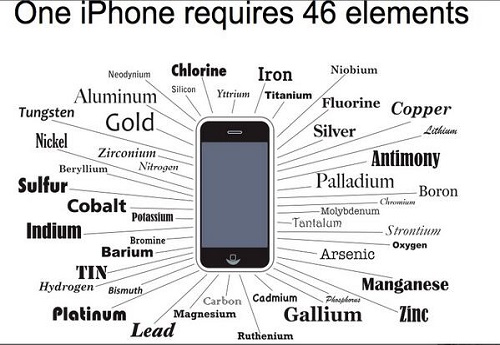The Gold Inside Your iPhone: Exploring the Materials Powering Modern Electronics

Join Eric Smith at Stanford Advanced Materials as he explores the surprising amount of gold inside your iPhone and what it reveals about the materials we rely on in modern electronics. With Dr. Robert Mason, an expert in materials science, the episode delves into why gold is used in smartphones despite its minimal quantity and high cost. Discover how this precious metal, along with other critical elements like silicon, tin, and tungsten, plays a crucial role in the functionality of our devices.
Dr. Mason also highlights the broader implications of these materials, emphasizing the importance of responsible sourcing, recycling, and reducing e-waste. If you’re curious about what’s inside your gadgets and the impact it has on our world, this episode offers eye-opening insights.
Want to learn more about the materials discussed? Send an inquiry or connect with us on our social media channels.
Welcome to Stanford Advanced Materials! I’m Eric Smith. A while back, we explored the various materials that make up your smartphone. Today, we’re diving into a particularly fascinating question—how much gold is actually inside your iPhone? And more broadly, what does this tell us about the materials we rely on in modern electronics? To help us unpack this, I’m joined by Dr. Robert Mason. Thanks for being here, Dr. Mason!
Thanks, Eric! I’m thrilled to discuss this topic. Gold in our gadgets is a great starting point to explore the broader implications of material use in technology.
So, we know there’s gold in our phones, but just how much are we talking about, and why is it used?
Gold is indeed present, but the amount is quite minimal—about 0.034 grams per iPhone, which is worth roughly $2. The reason it’s used, despite its cost, is because of its excellent electrical conductivity and resistance to corrosion. These properties make gold ideal for crucial components like the motherboard’s connectors and the SIM card contacts.
Given the small amount, is it even practical to recover gold from old phones?
On an individual level, it’s not practical. To extract just 1 gram of gold, you’d need around 41 phones. However, on an industrial scale, recycling operations efficiently recover gold and other precious metals from e-waste. This process not only recovers valuable materials but also reduces environmental impact by keeping these elements out of landfills.
That’s a great point. And beyond gold, what other critical elements are in our smartphones that contribute to their functionality?
Phones are complex devices made of various materials. For instance, silicon is essential for the processors, forming the backbone of the chip architecture. Tin and lead are used in soldering, though lead is now often replaced with safer alternatives due to its toxicity. Tungsten is used in the phone’s vibrator for its density and durability. These materials work together to ensure the phone’s performance and longevity.
It’s fascinating how so many elements come together to create something we use every day. What’s the broader significance of understanding these materials?
Understanding these materials highlights the importance of responsible sourcing and recycling. The environmental and ethical implications of mining and disposing of these materials are significant. As consumers, being aware of what’s inside our devices can lead to more informed decisions, like supporting companies that prioritize sustainable practices.
That’s a powerful message, Dr. Mason. Any final thoughts on what listeners should take away from this discussion?
I’d say the key takeaway is the importance of recycling and the role we all play in reducing e-waste. While the gold content in a single phone is minimal, collectively, the impact is huge. Proper recycling can recover valuable materials and prevent harmful substances from polluting the environment.
Thanks so much, Dr. Mason, for sharing your insights. This discussion has definitely shed light on the hidden value and responsibility within our everyday technology.
It was a pleasure, Eric. I’m glad to contribute to such an important conversation.
Hope you found today’s discussion as fascinating as we did. If you’re curious about more topics in the world of materials science, be sure to subscribe to Stanford Advanced Materials. Keep exploring, keep questioning, and we’ll see you in the next episode!
